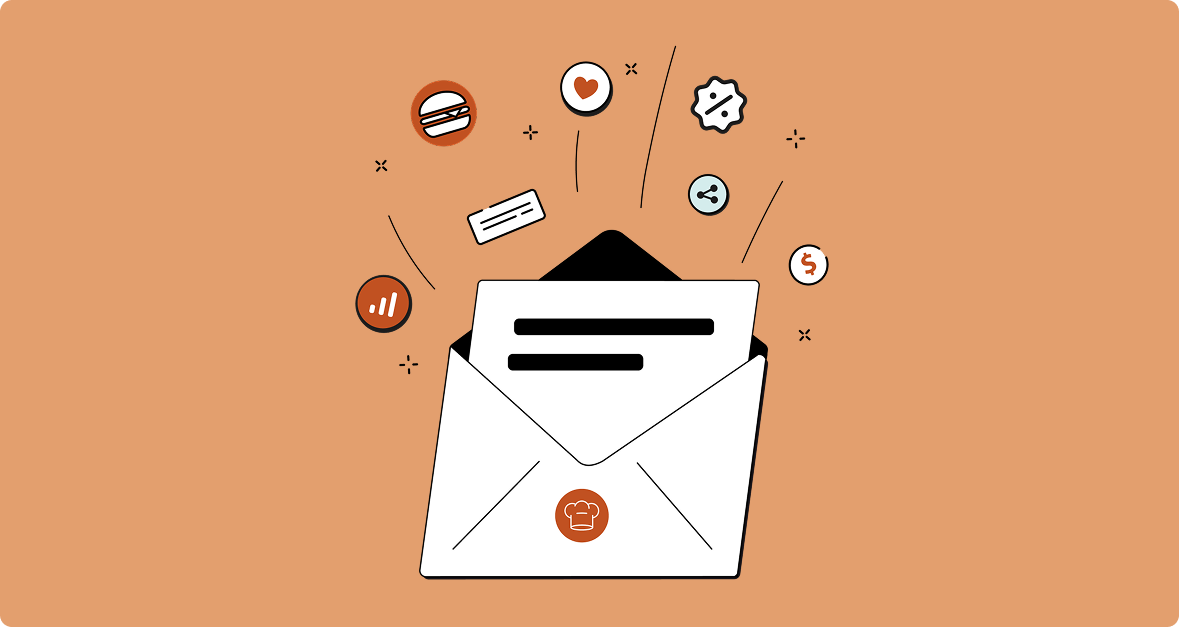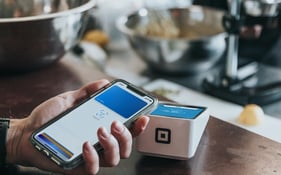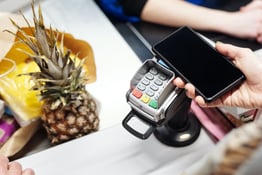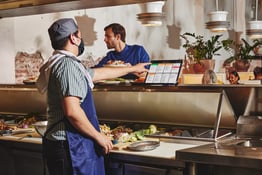Updated July 17, 2025
What do you need, how do you get it, how much will it cost, and when can it be here? The tech solutions that address restaurants’ purchasing, inventory, and back office operations aim to answer those questions for you as your needs arise — or, ideally, before they do.
Analyze your sales by day of the week, track your purchases by supplier, optimize prices for menu items, organize invoices, establish predictable sales channels, and do it all without having to input data manually.
The essential principle of business — to buy a thing at one price and sell it at a higher price — becomes easier and more consistent when you have software helping you track the money coming in and the money going out.
What Is Restaurant Inventory Management Software?
An inventory management system is designed to help restaurants stay on top of what’s coming in, what’s going out, and where things might be slipping through the cracks. Instead of relying on spreadsheets or manual inventory counts, these systems give operators a real-time view of accurate inventory levels across the kitchen, bar, and other locations.
With inventory management software, you can expect:
- Real-time inventory tracking: Know exactly what you have on hand at any given moment. As ingredients are used or deliveries come in, your system updates automatically, giving you an accurate snapshot without having to walk into the freezing walk-in.
- Recipe costing: Inventory tools break down your menu items by ingredient so you can see the actual cost of every dish. That means better menu pricing decisions and quicker insights when margins start to tighten.
- Food waste logging: Spoilage, over-prep, or a broken case of eggs — waste happens. But with the right software, you can track and log every loss and start to see patterns you can correct.
- Mobile access: No need to be tied to a desktop. Mobile-friendly platforms let chefs and managers count inventory, log waste, or check stock levels from a mobile app on their phones or tablets, wherever they are.
- POS integration: A good food inventory system plays nicely with your point-of-sale. The system deducts ingredients from your inventory in real time when items are sold, so your counts stay accurate without extra work.
What Does Purchasing Software Do?
Purchasing software simplifies and streamlines ordering food, beverages, and supplies. Instead of juggling multiple vendor sheets and email chains, these tools centralize ordering, track spending, and ensure you’re staying on budget.
Purchase software helps with:
- Vendor management: Your purchasing system should connect directly with your supply chains’ product catalogs, so you can view pricing, availability, and place orders without having to switch between platforms. Some tools even allow for price comparisons across vendors.
- Order management: Get visibility into what you’ve ordered, how often, and what it’s costing you. Tracking order history makes reordering faster and helps spot any shifts in pricing or usage over time.
- Budgeting tools and approval workflows: Control costs, track purchasing against budget, and route larger purchase orders for manager approval. These tools are especially helpful in multi-unit operations.
The Benefits of Combining These Software Solutions
When your systems are working together, you can streamline workflows, cut down on waste, and get a clearer picture of your bottom line. Here’s how these solutions deliver real value across your day-to-day restaurant operations:
-
Save time: Don’t spend hours punching data from different sources into spreadsheets, or trying to compile spreadsheets. Let a software do that while you focus on the parts of your job that actually bring you joy.
-
Save money: Don’t hire consultants to look for insights on how you can be more efficient until you’ve actually tried to become more efficient with faster, more reliable inventory tracking and invoice automation.
-
Gather granular data: In the live fire of an evening shift, your staff is more focused on cooking and serving than on logging a broken bottle of wine or dropped plate of duck wings. Integrated tracking systems make it simple for them to log those losses and move on with their night.
-
Connect to your favorite suppliers: Communicate instantly with your favorite farmer or wine distributor to let them know when you’re low on something, or be first in line when they have something to sell.
-
Pay bills and invoice instantly: No one’s favorite task now takes exactly as much time as it ought to, which is to say, nearly zero.
-
Make fewer mistakes: Your vendor changed their prices. Your sous chef’s handwriting is illegible. Your mental math is unreliable at the end of a night shift. Yeah, don’t worry about all that. Use software that updates on the fly, and that allows for simple inputs and calculations.
Features To Look for in Your Software
Choosing the right inventory and purchasing software is more than just having fancy bells and whistles; it’s about finding tools that match your workflow and solve the headaches you face every day. There are some features that should be on your radar, along with a few nice-to-haves that can make a big difference once you’re up and running.
Integration With POS and Accounting Software
Your inventory system should talk to the tools you already use. A good platform will pull real-time sales data from your POS system to automatically update low stock alerts and push purchasing info into your accounting software for easier financial tracking. The fewer spreadsheets and manual entries, the better.
Multi-Location Support
If you’re running more than one location or thinking about expanding, make sure your system can handle it. Look for platforms that allow you to manage multiple units from a single dashboard, compare performance across locations, and centralize purchasing when it makes sense.
Cloud-Based Access
With cloud-based systems, you’re no longer tied to the back office computer. Managers can place orders, check counts, or approve invoices from a tablet, phone, or laptop, wherever they are. It’s a must for any operator on the move or working across sites.
User Permissions and Role-Based Access
Not everyone on your team needs access to every function. The best systems let you set different permission levels for kitchen staff, managers, and restaurant owners, so your team can do their jobs without creating confusion or touching sensitive info.


Subscribe to Our Monthly Operations Newsletter
Learn how to streamline your processes, cut costs, and run a more efficient restaurant.
Mobile Receiving and Scanning
Checking in a delivery is a whole lot easier when you can scan barcodes or log items right from your phone. Mobile receiving helps reduce errors, speeds up the process, and keeps your records accurate from the start.
AI-Based Forecasting
Smarter systems can now use sales trends and seasonality to predict what you’ll need and when. AI-based forecasting helps you make more informed purchasing decisions, avoid inventory shortages, and cut back on waste from over-ordering.
Automated Par-Level Ordering
Set your ideal stock levels once, and let the system do the math. Automated online ordering based on par levels saves time and makes sure you’re always stocked with your must-haves without going overboard.
Tracking Success: The KPIs That Matter
Once your purchasing, inventory, and back office systems are up and running, you’ll want to track a few key performance indicators (KPIs) to measure their impact. These metrics include:
- Food cost percentage: Are your systems helping you reduce waste and improve cost control?
- Inventory turnover rate: High-performing restaurants tend to turn over inventory quickly without overstocking.
- Shrinkage levels: Effective tools should help minimize loss due to spoilage, theft, or miscounts.
- Order accuracy rate: Are your vendors delivering what you ordered, when you ordered it? Good purchasing tools will flag discrepancies and help resolve them quickly.
Who Uses Solutions for Purchasing, Inventory, and Back Office?
Any business that has to move goods in and out is almost certainly using some form of back office software to make sense of that ebb and flow. But restaurants and other food and beverage establishments have some of the most complex systems to wrangle.
Lots of elements contribute to that complexity. Foods and many drinks are seasonal; they can spoil; they require other ingredients to work together in concert; and they can vary tremendously in price and quality, depending on where they’re sourced.
Restaurants
From fast-casual to fine dining, restaurants depend on software that can keep up with the pace of service while supporting cost control. Inventory tools that track ingredients down to the recipe level, purchasing systems that support vendor comparison, and back office platforms that handle labor tracking and tip reporting are essential.
Seamless integration with your restaurant POS is a must, especially for automating updates to inventory and sales reports.
Bars
Bars need systems that are built for volume and precision. Look for inventory tools that offer bottle-level tracking, pour cost analysis, and automated variance reports. Purchasing software that helps manage relationships with liquor distributors and alerts you when it’s time to reorder can save hours of manual work.
On the back office side, tip pooling tools and real-time sales data help your managers stay on top of daily performance and labor costs.
Hotels
Hotels often manage multiple food and beverage outlets, from room service to banquets, so purchasing and inventory systems need to support complexity. Tools that offer centralized purchasing with the ability to allocate costs by department can make life easier.
For back office functions, platforms that integrate with your property management system (PMS) and offer multi-department reporting will help streamline operations across the entire hotel.
Other Hospitality Operations
Cafes, event venues, resorts, and other nontraditional foodservice operations benefit from flexible systems that can adapt to unique workflows. For example, an event space might need inventory data software that accounts for large batch prep and fluctuating headcounts, while a resort might prioritize centralized ordering across several outlets.
Choosing tools that are customizable and user-friendly, especially if turnover is high, will go a long way in improving consistency and control.
Streamline Your Restaurant Operations With Back Of House
Having the right tech solution for your purchasing, inventory, and back office needs can bring your restaurant’s big-picture vision to life, without getting bogged down by the day-to-day. These tools help you turn your plans into action, handling essential tasks faster, with less hassle, and more accuracy than ever before. With Back of House’s systems in place, you and your team can focus on what you do best: creating great food and unforgettable experiences.
Let us help you find the tools that do the heavy lifting, so you can get back to leading your team and providing excellent customer service. Talk to an expert today.





